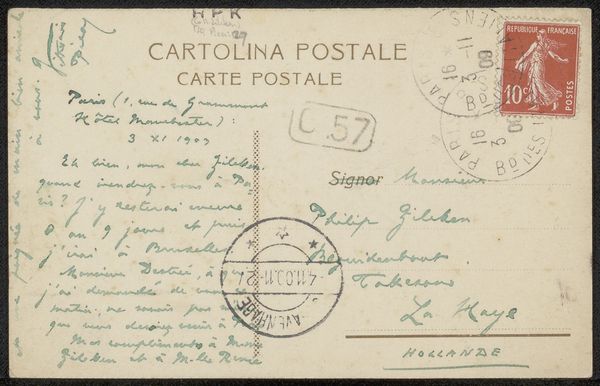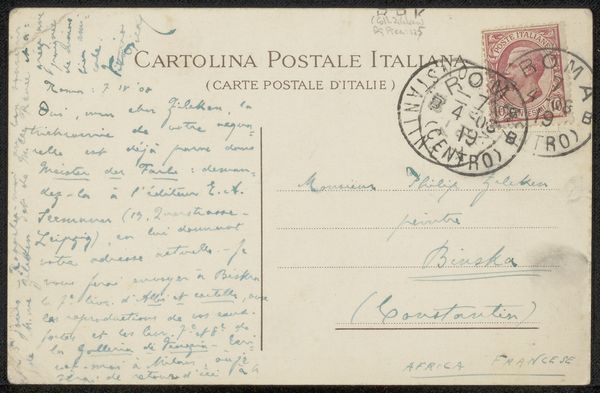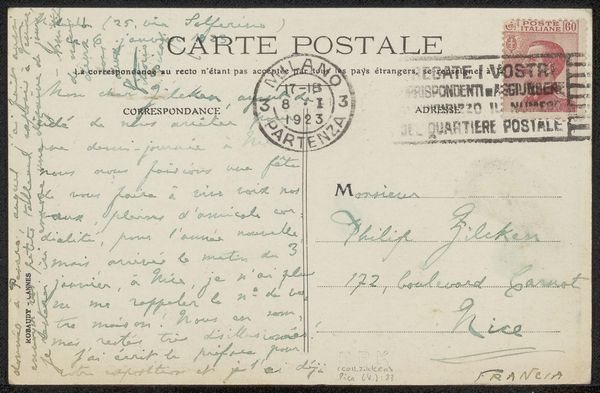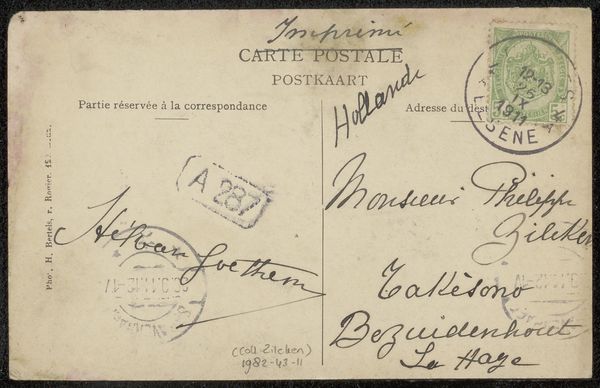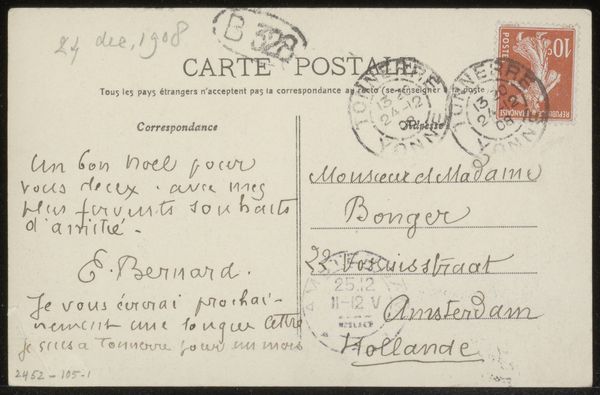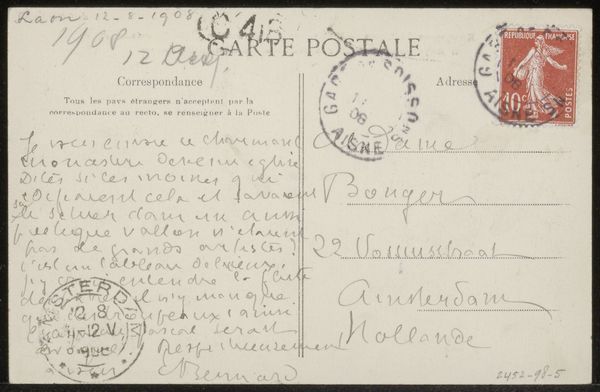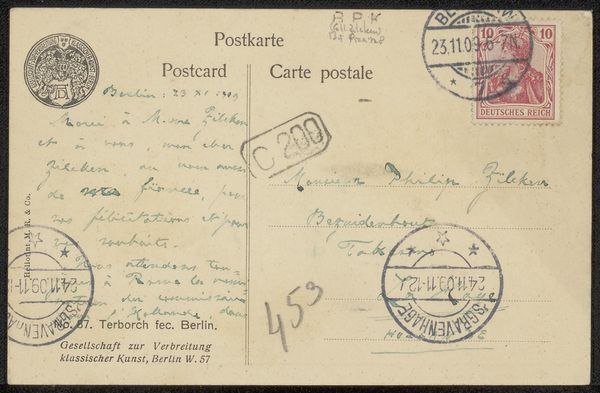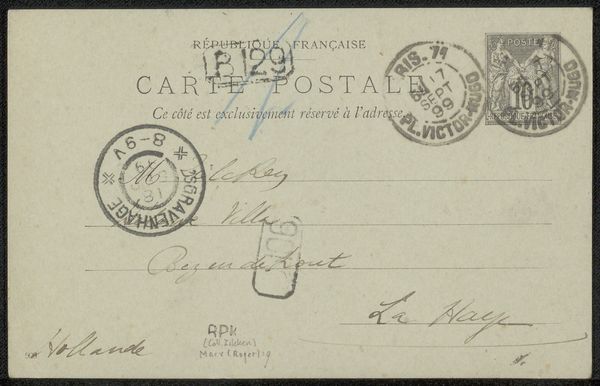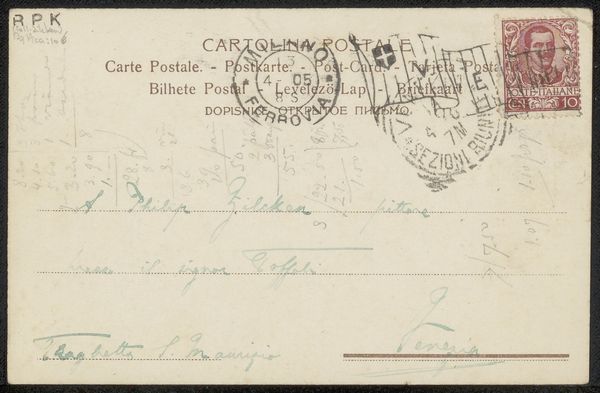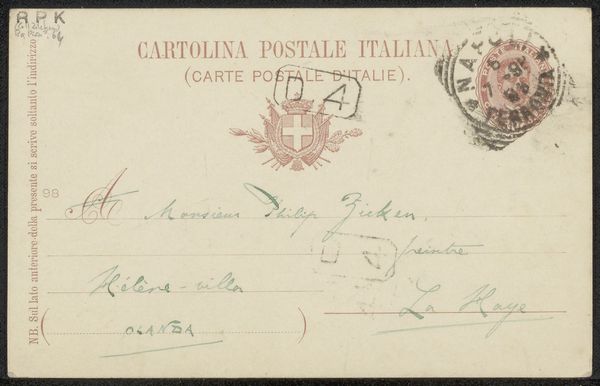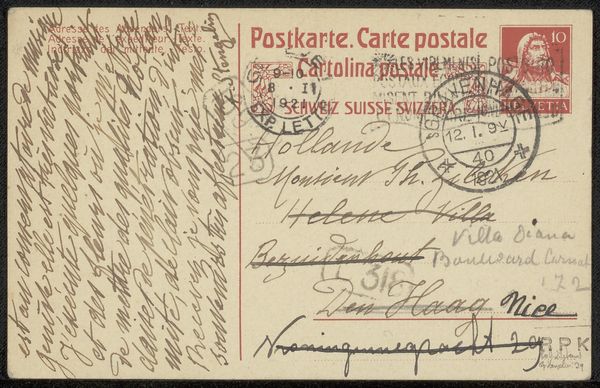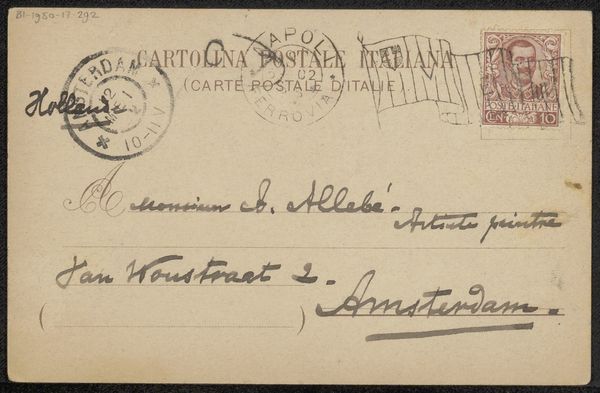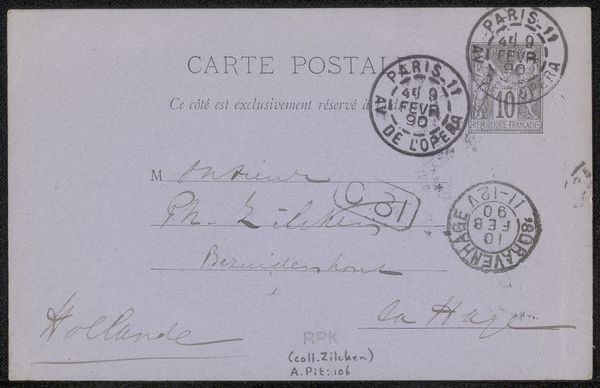
drawing, paper, ink
#
drawing
#
pen drawing
#
paper
#
ink
Copyright: Rijks Museum: Open Domain
Curator: This piece is a postcard to Philip Zilcken, likely from 1910. It appears to be ink on paper. What strikes you initially about it? Editor: The sheer amount of handwriting, different styles and inks even, makes it feel very intimate, like a peek into a private conversation, despite being something sent through the post. It seems so different from the instant communication we have now. How do you interpret the significance of sending something like this? Curator: The postal system of the late 19th and early 20th century was transformative, fundamentally altering how people communicated across distances. Postcards, in particular, became extremely popular due to their affordability and accessibility. For artists, they were not just for personal correspondence, but served as a tool for networking, self-promotion and disseminating ideas within artistic circles. Consider the function this postcard may have served – who was Philip Zilcken? Editor: Ah, good point! The description calls him out as a profile. It sounds like the sender is talking about illustrations or reproductions, something about “Israels”, even. Was there a trend towards that sort of content at the time? Curator: Yes, the early 20th century saw growing interest in national identity, ethnographic studies, and also burgeoning tourism which helped fuel this. Representations of other cultures and religious imagery found their way into popular visual culture through printed media like postcards and illustrated books. It would be interesting to research Zilcken further to find out more about what work this might be referencing and what sort of distribution networks were accessible to him at that time. What have you found most interesting? Editor: For me, it’s that an ostensibly simple piece of mail can be a snapshot of cultural trends, artistic exchange, and the mechanics of communication in a specific period of time. Curator: Precisely. The study of seemingly mundane objects can often provide incredibly insightful perspectives on the bigger historical picture.
Comments
No comments
Be the first to comment and join the conversation on the ultimate creative platform.
